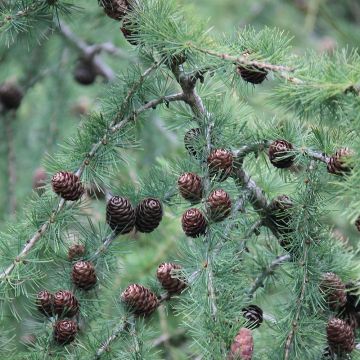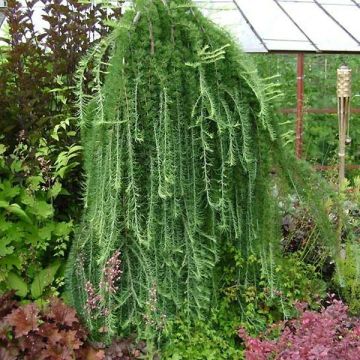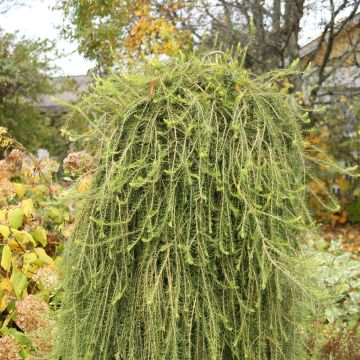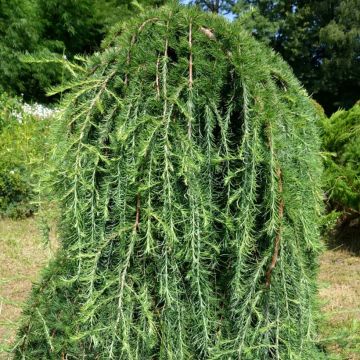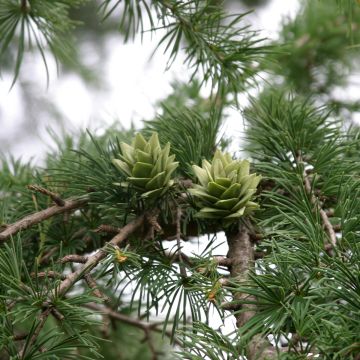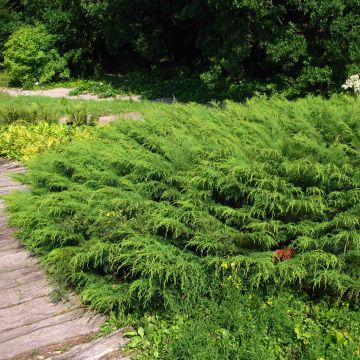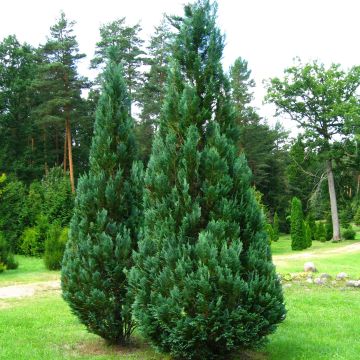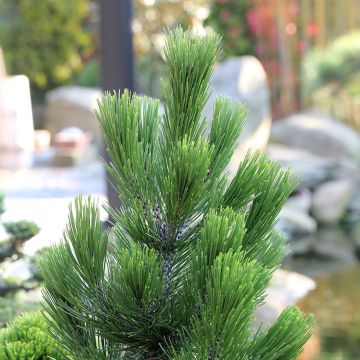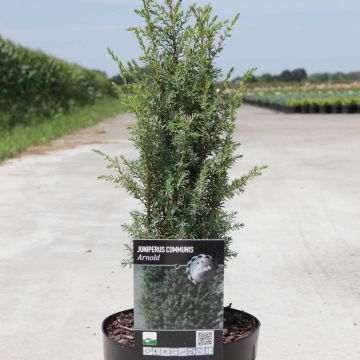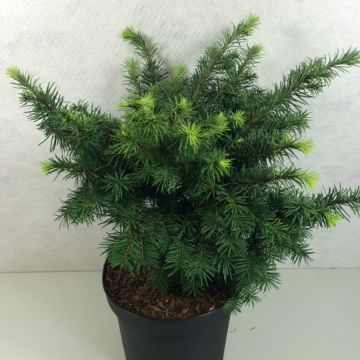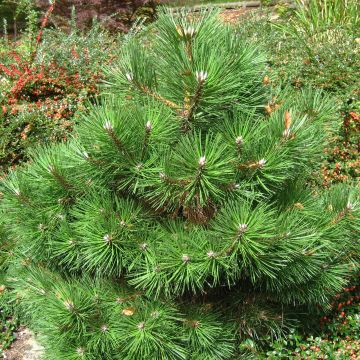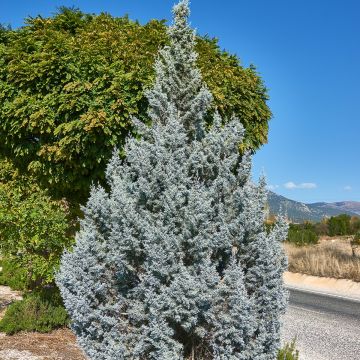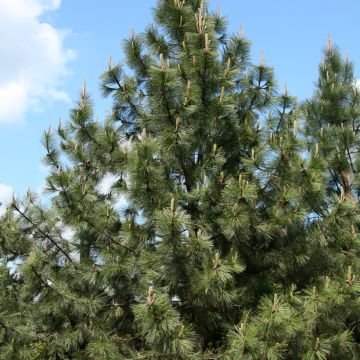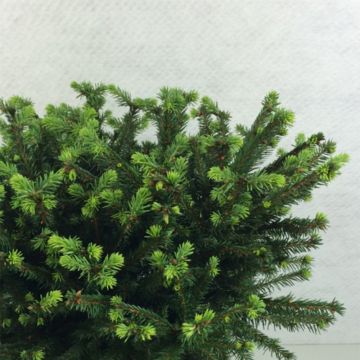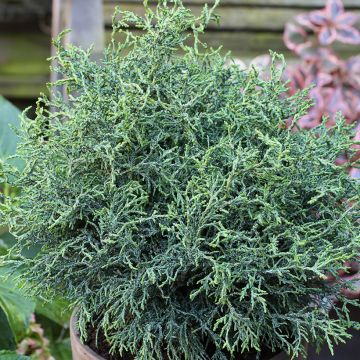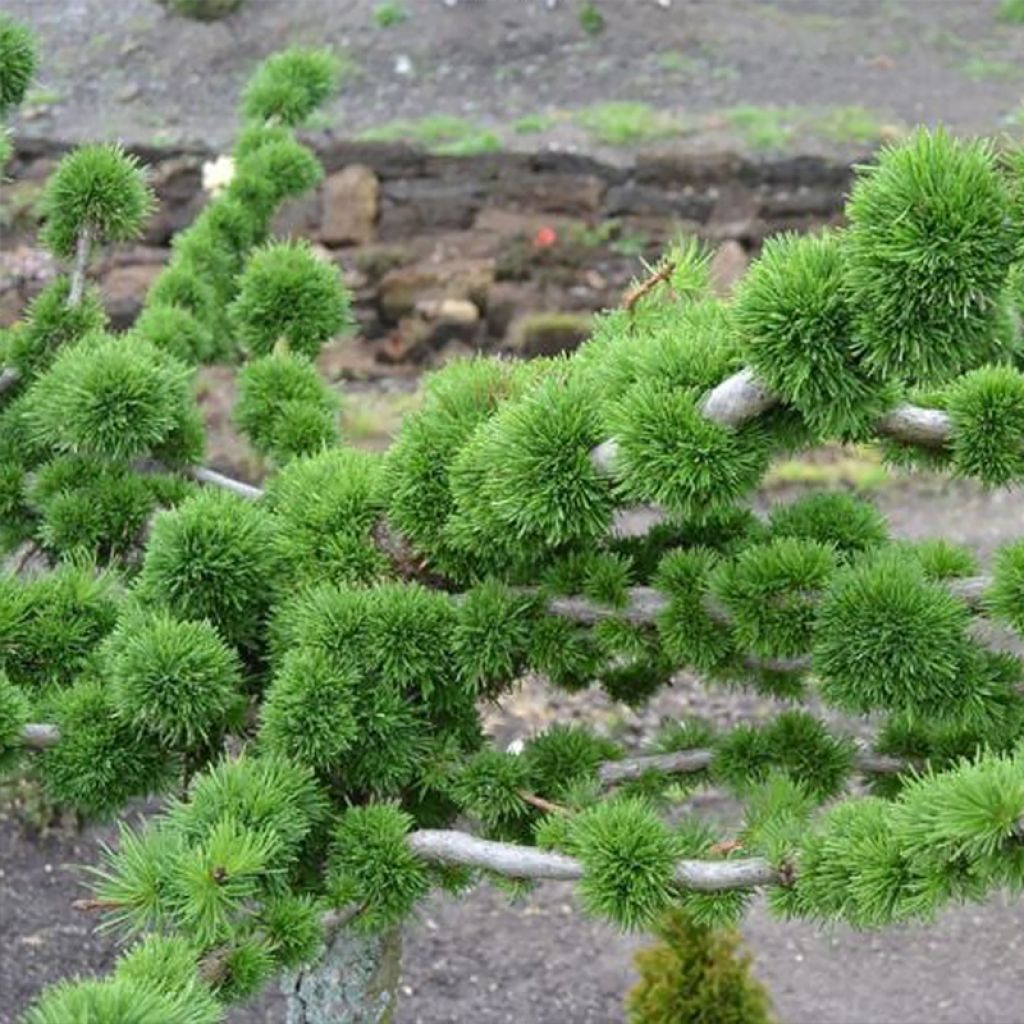

Larix decidua Krejci - Larch
Larix decidua Krejci - Larch
Larix decidua Krejci
European Larch, Common Larch
Why not try an alternative variety in stock?
View all →This plant carries a 24 months recovery warranty
More information
We guarantee the quality of our plants for a full growing cycle, and will replace at our expense any plant that fails to recover under normal climatic and planting conditions.
From €5.90 for pickup delivery and €6.90 for home delivery
Express home delivery from €8.90.
Does this plant fit my garden?
Set up your Plantfit profile →
Description
Larix decidua 'Krejci' is one of the few dwarf forms of the European larch (along with 'Little Bogle'). This deciduous conifer has an extremely twisted, somewhat anarchic habit, with branches orienting in all directions. In spring, they are covered with foliage made up of bright green needles, turning yellow in autumn. It is perfect in a rockery and lends itself well to the art of bonsai. This incredibly hardy variety is native to mountainous regions. It appreciates light and slightly moist soil, without too much limestone, even poor, as well as a sunny exposure.
The European larch, Larix decidua, is a tall conifer that can reach a height of 30m (98ft), with deciduous foliage that falls in autumn. It is native to the mountains of central and southern Europe, where it is found at an altitude between 1400 and 2400m (4593 and 7874ft). It is a pioneer species capable of improving poor or degraded soils, with a high hardiness (up to -40°C (-40°F)). Highly valued for its wood, it adapts very well to cultivation in lowland areas. It belongs to the Pinaceae family, like pines, firs, and spruces. It is a species closely related to the Japanese Larix kaempferi.
Larix decidua 'Krejci' forms a small, somewhat gangly bush after 10 years, about 1m (3ft) tall with a spread of 1.5m (5ft). Its branches are very twisted, giving it a somewhat ghostly appearance in winter. In spring, the branches are adorned with foliage of bright green tender needles, inserted in small irregular tufts along the branches. In autumn, they turn yellow like other European larches.
Extremely cold-resistant, this miniature conifer is, however, sensitive to drought. It should therefore be planted in moist, well-exposed sunny soil. Once these basic needs are met, it proves to be rather easy to cultivate, requiring almost no maintenance, except for some slight pruning to shape its habit.
More curious than truly decorative, this Larix will interest collectors and enthusiasts of plant rarities. Its unique habit will not go unnoticed and will allow it to find its place in a rockery, provided the soil is not dry, or in a contemporary garden. It can also be easily grown in a pot to decorate a patio or balcony. It can even be shaped into a bonsai.
This little larch can be the centrepiece of a bizarretum, a collection of woody plants with an eccentric appearance. It can be planted with Pinus parviflora 'Negishi', a Japanese white pine that shares its twisted appearance, but with an upright, conical habit and bluish-grey needles. Abies koreana 'Kohout's Icebreaker®', with its unusual appearance of curly young shoots exposing the white undersides of the needles, will also be a good companion for this little larch, as well as the rare Podocarpus lawrencii 'Blue Gem' with its spiky appearance.
Tips: Water regularly during the first two years, and in case of prolonged drought. While it can tolerate occasional dry soil in a cool climate, this conifer will be disappointing in a warm climate, which is too dry and too hot in summer.
Report an error about the product description
Larix decidua Krejci - Larch in pictures
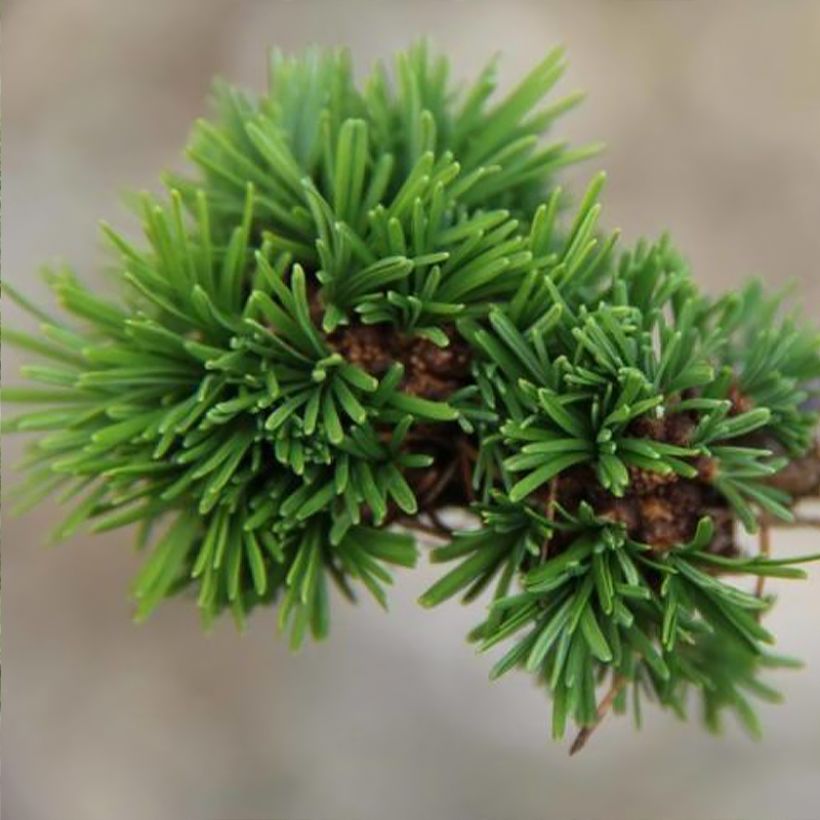

Plant habit
Foliage
Botanical data
Larix
decidua
Krejci
Pinaceae
European Larch, Common Larch
Cultivar or hybrid
Other Larix - Larch
Planting and care
Larix decidua 'Krejci' is a mountain plant that fears arid situations. Plant in spring or from September to November in moist but well-drained, even poor, soil, preferably slightly acidic, and low in limestone. Choose a sunny or semi-shady location. A mixture containing coarse sand, ericaceous soil and compost added to the garden soil will work very well. If your soil is too heavy, plant your bush on a mound and mulch it with non-limestone gravel. Water regularly during the first two years, and in case of prolonged drought. Soak the clumps well before planting. This very hardy conifer also fears heavy, clayey soils, saturated with water.
Planting period
Intended location
Care
This item has not been reviewed yet - be the first to leave a review about it.
Conifers
Haven't found what you were looking for?
Hardiness is the lowest winter temperature a plant can endure without suffering serious damage or even dying. However, hardiness is affected by location (a sheltered area, such as a patio), protection (winter cover) and soil type (hardiness is improved by well-drained soil).

Photo Sharing Terms & Conditions
In order to encourage gardeners to interact and share their experiences, Promesse de fleurs offers various media enabling content to be uploaded onto its Site - in particular via the ‘Photo sharing’ module.
The User agrees to refrain from:
- Posting any content that is illegal, prejudicial, insulting, racist, inciteful to hatred, revisionist, contrary to public decency, that infringes on privacy or on the privacy rights of third parties, in particular the publicity rights of persons and goods, intellectual property rights, or the right to privacy.
- Submitting content on behalf of a third party;
- Impersonate the identity of a third party and/or publish any personal information about a third party;
In general, the User undertakes to refrain from any unethical behaviour.
All Content (in particular text, comments, files, images, photos, videos, creative works, etc.), which may be subject to property or intellectual property rights, image or other private rights, shall remain the property of the User, subject to the limited rights granted by the terms of the licence granted by Promesse de fleurs as stated below. Users are at liberty to publish or not to publish such Content on the Site, notably via the ‘Photo Sharing’ facility, and accept that this Content shall be made public and freely accessible, notably on the Internet.
Users further acknowledge, undertake to have ,and guarantee that they hold all necessary rights and permissions to publish such material on the Site, in particular with regard to the legislation in force pertaining to any privacy, property, intellectual property, image, or contractual rights, or rights of any other nature. By publishing such Content on the Site, Users acknowledge accepting full liability as publishers of the Content within the meaning of the law, and grant Promesse de fleurs, free of charge, an inclusive, worldwide licence for the said Content for the entire duration of its publication, including all reproduction, representation, up/downloading, displaying, performing, transmission, and storage rights.
Users also grant permission for their name to be linked to the Content and accept that this link may not always be made available.
By engaging in posting material, Users consent to their Content becoming automatically accessible on the Internet, in particular on other sites and/or blogs and/or web pages of the Promesse de fleurs site, including in particular social pages and the Promesse de fleurs catalogue.
Users may secure the removal of entrusted content free of charge by issuing a simple request via our contact form.
The flowering period indicated on our website applies to countries and regions located in USDA zone 8 (France, the United Kingdom, Ireland, the Netherlands, etc.)
It will vary according to where you live:
- In zones 9 to 10 (Italy, Spain, Greece, etc.), flowering will occur about 2 to 4 weeks earlier.
- In zones 6 to 7 (Germany, Poland, Slovenia, and lower mountainous regions), flowering will be delayed by 2 to 3 weeks.
- In zone 5 (Central Europe, Scandinavia), blooming will be delayed by 3 to 5 weeks.
In temperate climates, pruning of spring-flowering shrubs (forsythia, spireas, etc.) should be done just after flowering.
Pruning of summer-flowering shrubs (Indian Lilac, Perovskia, etc.) can be done in winter or spring.
In cold regions as well as with frost-sensitive plants, avoid pruning too early when severe frosts may still occur.
The planting period indicated on our website applies to countries and regions located in USDA zone 8 (France, United Kingdom, Ireland, Netherlands).
It will vary according to where you live:
- In Mediterranean zones (Marseille, Madrid, Milan, etc.), autumn and winter are the best planting periods.
- In continental zones (Strasbourg, Munich, Vienna, etc.), delay planting by 2 to 3 weeks in spring and bring it forward by 2 to 4 weeks in autumn.
- In mountainous regions (the Alps, Pyrenees, Carpathians, etc.), it is best to plant in late spring (May-June) or late summer (August-September).
The harvesting period indicated on our website applies to countries and regions in USDA zone 8 (France, England, Ireland, the Netherlands).
In colder areas (Scandinavia, Poland, Austria...) fruit and vegetable harvests are likely to be delayed by 3-4 weeks.
In warmer areas (Italy, Spain, Greece, etc.), harvesting will probably take place earlier, depending on weather conditions.
The sowing periods indicated on our website apply to countries and regions within USDA Zone 8 (France, UK, Ireland, Netherlands).
In colder areas (Scandinavia, Poland, Austria...), delay any outdoor sowing by 3-4 weeks, or sow under glass.
In warmer climes (Italy, Spain, Greece, etc.), bring outdoor sowing forward by a few weeks.

































